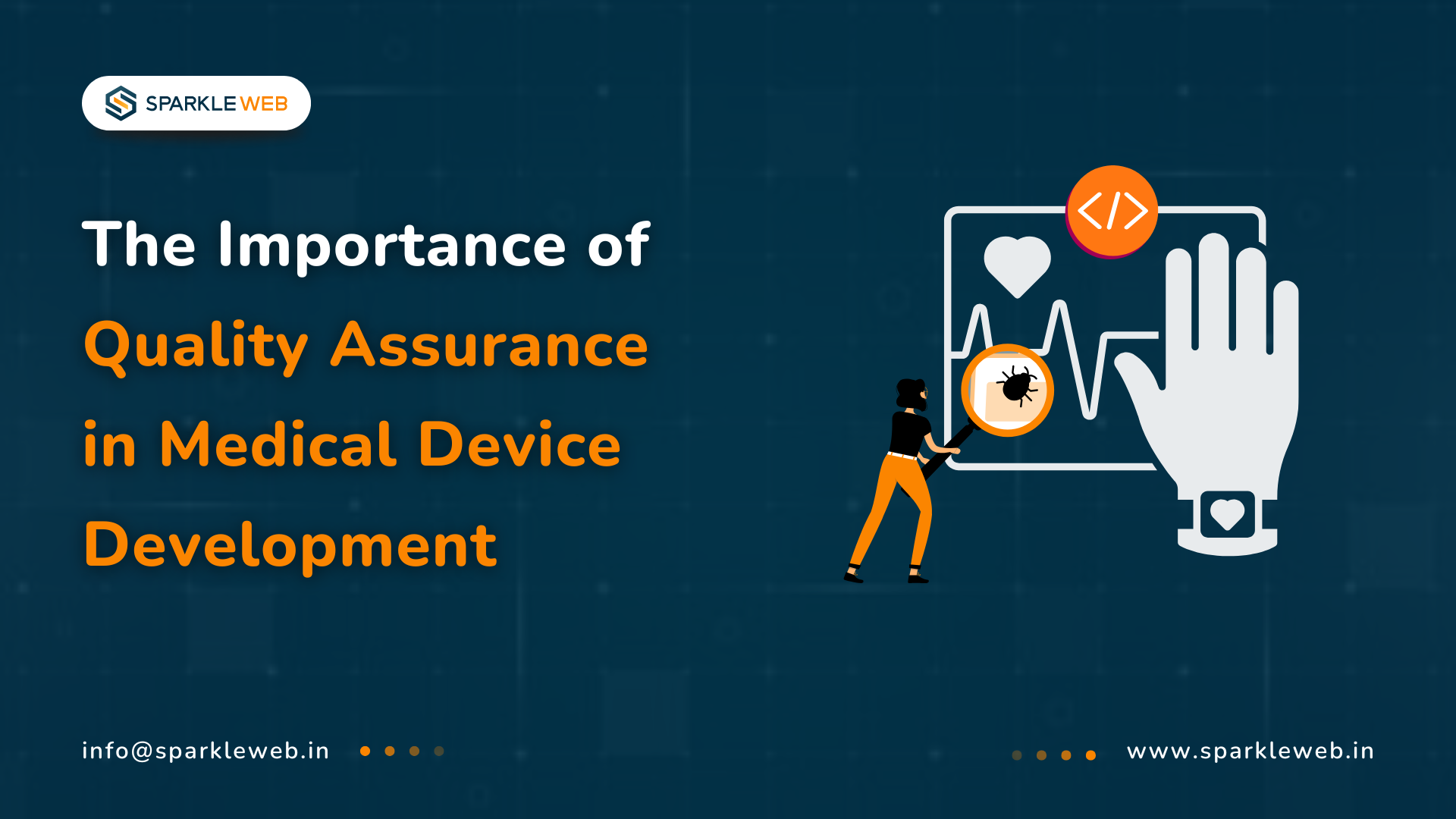What is Medical Device Testing?
-
Performs effectively in real-life conditions
-
Provides accurate measurements and readings
- It is safe to use for patients and healthcare professionals
Why QA is Important
-
Ensures regulatory compliance (HIPAA, FDA, ISO standards, etc.)
-
Confirms that software and devices work correctly under various scenarios
- Checks integration with other devices and systems
- Improves the clinical effectiveness of devices
-
Reduces risks of device failure
-
Helps prevent false diagnoses and ensures reliable patient data
Role of QA in Medical Device Testing
1. Compliance Testing
-
Checking that devices meet regulatory requirements (HIPAA, PCI DSS, FDA, ISO 13485).
-
Ensuring patient data is secure and protected.
2. Integration Testing
-
Testing whether devices and software work well together.
-
Making sure patient apps, CRMs, and hospital systems communicate correctly.
3. Connectivity Testing
- Ensures devices connect and interact with other devices correctly.
4. Clinical Effectiveness
- Tests to confirm devices improve patient outcomes and deliver accurate results.
5. End-to-End Testing
- Verifies that the entire device workflow from sensor to app to data storage works correctly.
Methods Followed by QA for Medical Device Software Testing
1. Functionality Testing
-
Each feature of the device is tested with various input values.
-
Verifies the accuracy, performance, and safety of device functions.
2. Device Verification Testing
-
Starts with well-defined product requirements that can be measured.
-
Uses a standard protocol to compare the device’s performance against approved requirements.
- If verification fails, QA investigates which requirement is not met and whether it can be fixed or updated.
Benefits:
-
Reduces errors before production
-
Saves costs
- Ensures the device meets expectations with minimal risk
3. Device Validation (Software/Hardware) Testing
-
Both software and hardware are tested together.
-
Can be performed under simulated or real environment conditions.
Process:
4. Device Compatibility & Error Handling Testing
-
Test how devices work with different hardware, OS, and software platforms.
-
Ensure proper handling of errors such as:
- Power failures
-
- Peripheral device failure
-
-
Internal errors
-
5. Automated Testing
Process includes:
-
Stimulating the device
-
Monitoring device responses
- Recording results
- Controlling the testing process automatically
-
Declaring test results
Benefits:
-
Faster and more accurate results
-
Reduces manual effort
- Ensures consistent testing
6. White-Box Testing
-
Ensures testing is close to the design and coding phases
-
Checks for:
- Overflow conditions
-
- Timing issues
-
-
Interrupt handling
-
Error counts
-
Challenges in Medical Device Testing
1. Device Compatibility
-
Medical apps need to work on different mobile devices and operating systems.
-
Apps should remain secure, accessible, and updated.
2. Security Risks
-
Medical devices and apps handle sensitive patient data.
-
QA teams must perform security and penetration testing to prevent breaches.
3. Cloud Adoption
-
Many healthcare systems are moving to the Cloud.
-
QA ensures secure network connections and data protection during cloud migration.
Conclusion
-
More than 60% of device failures are caused by software or integration issues.
-
Proper QA ensures regulatory compliance, device safety, and reliability.
-
Reduce risks
-
Improve patient safety
- Ensure devices perform correctly
At Sparkle Web, we help healthcare companies implement end-to-end QA strategies for medical devices using modern tools, automation frameworks, and expert testing teams. Make your medical devices safe, reliable, and compliant. Contact us today to leverage our expert QA services.



Sumit Patil
A highly skilled Quality Analyst Developer. Committed to delivering efficient, high-quality solutions by simplifying complex projects with technical expertise and innovative thinking.
Reply